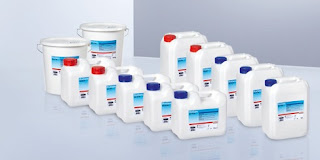Understanding Neutralizing Agents

Imagine a world constantly battling extremes, a world where imbalances run rampant. In the realm of chemistry, this scenario plays out with acidity and alkalinity vying for dominance. This is where neutralizing agents step in, acting as mediators to restore harmony. So, what are neutralizing agents? They are substances that counteract the effects of acids or bases, bringing a system closer to a neutral pH.
Neutralization is a fundamental chemical reaction that occurs when an acid reacts with a base. This reaction produces a salt and water, effectively minimizing the extreme effects of both the acid and the base. The concept of pH, a scale from 0 to 14, helps us measure acidity and alkalinity. A pH of 7 is considered neutral, while lower values indicate acidity and higher values indicate alkalinity. Neutralizing agents aim to shift the pH closer to this neutral point.
The history of understanding and utilizing neutralization dates back centuries, intertwined with the development of chemistry itself. Early alchemists and chemists observed the reactions between acidic and alkaline substances, laying the groundwork for our current understanding. The importance of neutralization spans numerous fields, from industrial processes to everyday life. In medicine, antacids neutralize excess stomach acid, relieving heartburn. In agriculture, lime (calcium hydroxide) is used to neutralize acidic soil, making it suitable for plant growth.
One of the main issues surrounding neutralization is the potential for over-neutralization. Adding too much neutralizing agent can shift the pH too far in the opposite direction, creating a new imbalance. Careful calculation and monitoring are crucial to ensure effective and safe neutralization. Another concern is the disposal of neutralized waste, which can sometimes pose environmental challenges depending on the substances involved.
A simple example of neutralization is the reaction between hydrochloric acid (HCl), a strong acid found in stomach acid, and sodium hydroxide (NaOH), a strong base. When these two react, they form sodium chloride (NaCl), common table salt, and water (H2O). This reaction effectively neutralizes the corrosive properties of both the acid and the base.
Neutralizing agents offer a range of benefits. Firstly, they protect sensitive materials from damage caused by strong acids or bases. Secondly, they help maintain a stable environment for chemical reactions and biological processes. Thirdly, they play a crucial role in wastewater treatment, neutralizing harmful effluents before they are released into the environment.
A simple action plan for using a neutralizing agent involves identifying the substance to be neutralized, choosing an appropriate neutralizing agent, carefully calculating the required amount, and slowly adding the agent while monitoring the pH. A successful example of neutralization in action is the use of baking soda (sodium bicarbonate) to neutralize a spilled acid in a laboratory setting.
Advantages and Disadvantages of Using Neutralizing Agents
| Advantages | Disadvantages |
|---|---|
| Protects against corrosion and damage | Potential for over-neutralization |
| Maintains stable pH levels | Waste disposal concerns |
| Essential for wastewater treatment | Can be costly depending on the application |
Five best practices for implementing neutralizing agents include: 1) Always wear appropriate safety gear. 2) Add the neutralizing agent slowly and gradually. 3) Constantly monitor the pH. 4) Have a spill kit readily available. 5) Dispose of neutralized waste properly.
Five real-world examples of neutralizing agents include: 1) Antacids for heartburn. 2) Lime for soil treatment. 3) Sodium hydroxide in industrial wastewater treatment. 4) Baking soda for cleaning. 5) Calcium carbonate in toothpaste.
FAQ: 1) What is a neutralizing agent? 2) How does neutralization work? 3) What are common neutralizing agents? 4) How do I choose the right neutralizing agent? 5) What is the importance of pH in neutralization? 6) What are the safety precautions for using neutralizing agents? 7) How do I dispose of neutralized waste? 8) What are the environmental impacts of neutralization?
A tip for using neutralizing agents effectively is to always test the pH before and after neutralization to ensure the desired result is achieved.
In conclusion, neutralizing agents play a vital role in maintaining balance and stability in various chemical and biological systems. Their ability to counteract the extreme effects of acids and bases has far-reaching applications, from treating indigestion to protecting industrial equipment. Understanding the properties and applications of these agents is crucial for ensuring safe and effective neutralization processes. By carefully considering the specific needs of each situation and adhering to best practices, we can harness the power of neutralizing agents to create a more harmonious and balanced world. Whether in the laboratory, the factory, or the home, the principles of neutralization are essential for maintaining equilibrium and preventing the damaging effects of unbalanced pH. As we continue to develop new technologies and refine our understanding of chemical processes, the importance of neutralizing agents will only continue to grow. Exploring the intricacies of neutralization opens a window into the fundamental principles that govern the interactions between different substances and highlights the delicate balance that sustains life and protects our environment.
Finding solace brotherhood and remembrance
Navigating the humana medicare landscape
Miami beach luxury collins avenue oceanfront hotels













